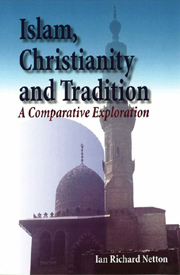2 - ORTHODOXY AND HETERODOXY: A WORN VOCABULARY EXPLORED
Published online by Cambridge University Press: 12 September 2012
Summary
Rejecting the Terms: Baldick contra Popovic and Veinstein
Earlier Western commentators on Islam have had few problems in deploying such terms as ‘orthodoxy’ and ‘heterodoxy’ with complete freedom, as if they were immediately self-explicable. Thus we find Professor Sir Hamilton Gibb, writing originally in 1949, stating in an initial chapter:
By this time the pressure of Muslim doctrine and practice had mastered most of the resistances that had, at an earlier time, sought an outlet in heterodox and subversive movements. But this did not lead to stagnation. On the contrary, the devotional feeling of the townsmen, grinding a channel of its own, burst the bonds of the orthodox disciplines and found a new freedom in the ranges of mysticism.
Elsewhere in the same volume, he entitles a chapter ‘Orthodoxy and Schism’, which discusses ‘the elaboration of orthodox theology’. He notes that ‘it would have been difficult for a contemporary to prophesy which of all these multifarious forms would emerge as the definitively orthodox or “official” version of the Islamic faith’. He goes on to recognise that ‘the establishment of an orthodox system was thus a gradual process, in which political considerations and political action played a large part (as always in the establishment of orthodox systems)’. In all this, there is little, if any, introspection on the part of Gibb as to the validity, or otherwise, of using the term ‘orthodox’, though he does admit that it carries with it the cultural baggage of ‘official’, as we have seen above. Furthermore, he suggests that the persecution of ‘the most heretical forms of Islam and more especially the gnostic and dualistic perversions’ led to ‘the definition of orthodoxy … being tightened up’.
- Type
- Chapter
- Information
- Islam, Christianity and TraditionA Comparative Exploration, pp. 45 - 105Publisher: Edinburgh University PressPrint publication year: 2006



